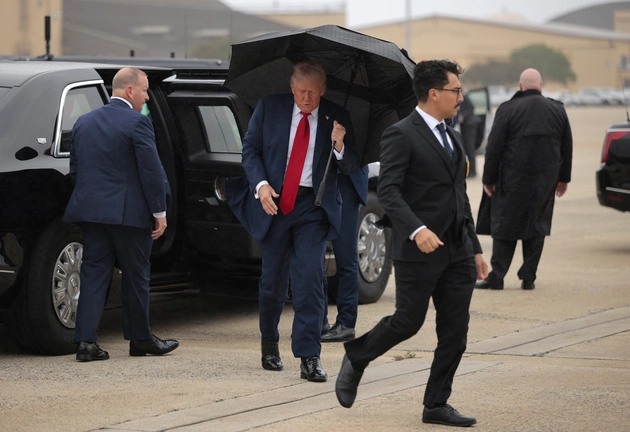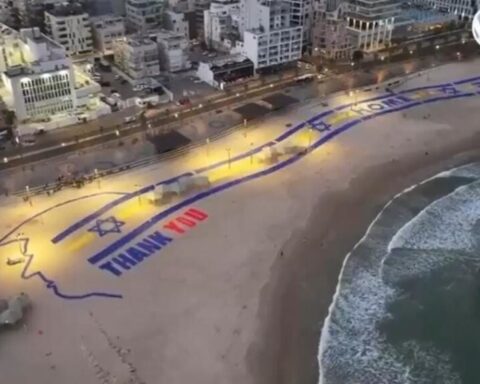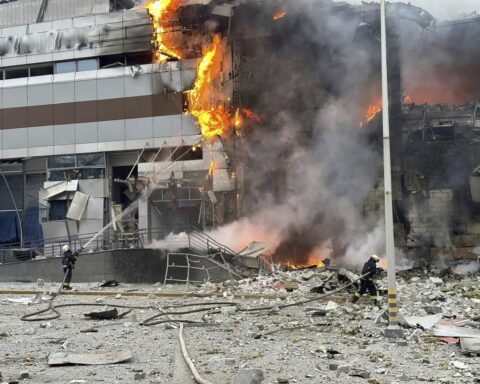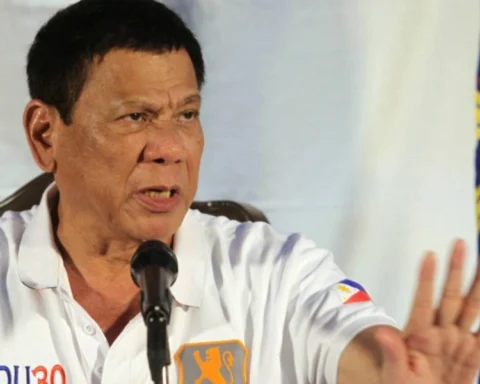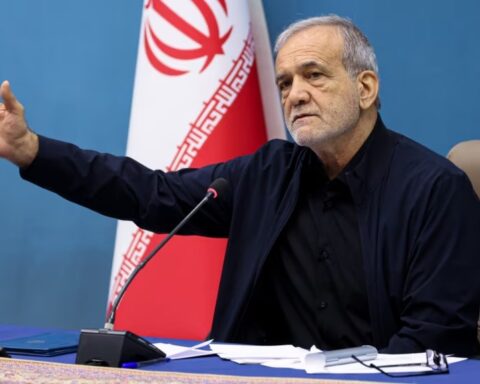In a striking intersection of American influence and Middle Eastern diplomacy, Donald J. Trump arrived in Israel coinciding with the liberation of the initial seven hostages held captive since the escalations of 2023, signaling a potential breakthrough in the long-stalled negotiations and underscoring Trump’s enduring role in regional affairs.
On October 13, 2025, as Trump’s private jet touched down at Ben Gurion International Airport near Tel Aviv, reports emerged from Israeli officials confirming the safe return of the seven individuals—comprising four Israelis, two Americans, and one dual citizen—from Gaza. The release, brokered through a fragile truce mediated by Qatar and Egypt with U.S. backing, came after months of painstaking talks that had repeatedly teetered on the brink of collapse. Trump’s visit, announced only days prior, was framed by his team as a show of solidarity with Israel, but it quickly became entwined with the unfolding hostage drama, drawing global attention to the former president’s self-styled peacemaking credentials.
The scene at the airport was one of controlled chaos, with heightened security measures in place amid ongoing tensions in the region. Israeli Prime Minister Benjamin Netanyahu, a longtime ally of Trump, was on hand to greet him, the two leaders exchanging firm handshakes against a backdrop of Israeli and American flags fluttering in the Mediterranean breeze. “This is a day of hope for our people,” Netanyahu said in brief remarks, alluding to both the hostage release and Trump’s presence. For Trump, who has frequently touted his administration’s Abraham Accords as a cornerstone of Middle East peace, the timing appeared fortuitous, allowing him to position himself as a pivotal figure even out of office.
The Hostages’ Ordeal and Path to Freedom
The seven hostages freed on this day represented a cross-section of those abducted during the October 7, 2023, attacks by Hamas militants, an event that ignited the latest chapter in the Israel-Hamas conflict. Among them were elderly civilians, a young mother, and dual nationals whose cases had garnered international sympathy. Their release was part of a phased deal that Israeli sources described as including a temporary ceasefire in Gaza, the exchange of Palestinian prisoners, and increased humanitarian aid deliveries to the beleaguered enclave.
Details of the negotiations remained shrouded in secrecy, but leaks from diplomatic channels suggested intense backchannel communications involving the Biden-Harris administration’s holdover envoys and Trump’s informal advisors. One hostage, identified as Miriam Levy, a 72-year-old from Kibbutz Be’eri, spoke haltingly to reporters upon her arrival at a military hospital in Tel Aviv. “I thought I would never see the light again,” she said, her voice trembling. “But today, freedom came.” The other freed individuals, whose identities were partially withheld for privacy, included American citizens whose plight had been highlighted by advocacy groups in the United States.
Human rights organizations praised the release but cautioned that over 100 hostages remained in captivity, with conditions reportedly deteriorating amid sporadic fighting. The International Committee of the Red Cross facilitated the handover at a border crossing, ensuring medical evaluations before the group was flown to safety. This initial batch was seen as a test of the truce’s viability, with both sides wary of violations that could unravel the fragile agreement.
Trump Arrives in Israel as First Seven Hostages Freed
Trump’s itinerary in Israel was packed with symbolic gestures and high-level meetings, beginning with a visit to the Western Wall in Jerusalem, where he placed a note in the ancient stones—a ritual he performed during his 2017 presidential trip. Accompanied by a entourage that included former aides and business associates, Trump met privately with Netanyahu to discuss security cooperation, Iran’s nuclear ambitions, and the broader implications of the hostage deal. “Nobody does deals like I do,” Trump remarked to a gaggle of journalists, echoing his campaign rhetoric. “This is just the beginning of real peace.”
Critics, however, viewed the visit with skepticism, accusing Trump of injecting partisan politics into a delicate humanitarian situation. Democratic leaders in Washington suggested that Trump’s appearance might complicate ongoing U.S. efforts, while some Israeli opposition figures decried it as a distraction from domestic challenges like economic strain and judicial reforms. Nonetheless, Trump’s supporters hailed the coincidence as evidence of his unmatched influence, pointing to his past role in normalizing relations between Israel and several Arab nations.
The former president’s speech at a gala dinner hosted by the American Israel Public Affairs Committee (AIPAC) chapter in Tel Aviv struck a defiant tone. He lambasted what he called “weak leadership” in the current U.S. administration for allowing the conflict to fester and pledged that, should he return to power, America would stand unequivocally with Israel. “The hostages are coming home because people know strength when they see it,” Trump declared, drawing applause from the crowd. Analysts noted that the address served dual purposes: bolstering Netanyahu’s coalition amid political pressures and burnishing Trump’s image ahead of potential future political maneuvers.
Broader Implications for Middle East Peace
The hostage release and Trump’s visit occur against a backdrop of shifting geopolitics in the Middle East. Since the 2023 attacks, which claimed over 1,200 lives in Israel and led to a devastating military response in Gaza resulting in tens of thousands of Palestinian casualties, the region has seen intermittent ceasefires but no lasting resolution. The Abraham Accords, brokered under Trump, expanded to include more nations, but the Palestinian question remains unresolved, with Hamas’s governance in Gaza a persistent thorn.
Experts suggest that the freeing of these seven individuals could pave the way for further exchanges, potentially involving all remaining hostages in return for a more comprehensive prisoner swap and reconstruction aid. “This is a confidence-building measure,” said Dr. Elias Haddad, a Middle East scholar at the Brookings Institution. “But sustainability depends on addressing root causes like settlements and statehood.” Trump’s involvement, informal as it may be, adds a layer of complexity, as his pro-Israel stance contrasts with calls for balanced diplomacy from European allies.
In Washington, reactions were polarized. President Kamala Harris’s administration issued a statement welcoming the releases and crediting multilateral efforts, while Republican lawmakers praised Trump’s “bold leadership.” On social media, hashtags like #FreeTheHostages and #TrumpInIsrael trended globally, reflecting the event’s viral impact. Protests in major cities, from New York to London, called for an end to the conflict, with demonstrators on both sides of the divide invoking the day’s developments.
Security Concerns and Regional Reactions
Israel’s security apparatus was on high alert during Trump’s visit, with reports of foiled plots by militant groups underscoring the risks. Hezbollah in Lebanon and Iranian proxies issued condemnatory statements, viewing Trump’s arrival as provocative. In Gaza, Hamas spokespeople described the release as a “partial victory” but vowed to continue resistance until all demands were met, including a full Israeli withdrawal.
Neighboring countries watched closely. Jordan and Egypt, key mediators, expressed cautious optimism, while Saudi Arabia—rumored to be considering normalization with Israel—hinted at accelerated talks. “The momentum is there,” a Saudi diplomat told reporters anonymously. “But one misstep could reset everything.”
Trump’s schedule included a stop at Yad Vashem, Israel’s Holocaust memorial, where he laid a wreath and met with survivors, a move aimed at reinforcing his commitment to Jewish security. Later, he toured the Golan Heights, reaffirming U.S. recognition of Israeli sovereignty there—a policy he enacted in 2019. These visits, rich in symbolism, were designed to resonate with evangelical Christian supporters back home, a key demographic in American politics.
Personal Stories Amid Geopolitical Drama
Behind the headlines, the human element loomed large. Families of the freed hostages gathered at hospitals, sharing tearful reunions captured by media crews. One American hostage, tech entrepreneur David Cohen, described his captivity as “a nightmare of uncertainty,” crediting persistent advocacy for his release. Support groups like Bring Them Home Now amplified these stories, using them to pressure for more action.
For those still waiting, the day brought mixed emotions—relief for some, renewed anguish for others. “Why not my son?” asked one mother in a televised interview, highlighting the selective nature of the deal. Psychologists warned of long-term trauma for returnees, advocating for comprehensive rehabilitation programs.
Trump, ever the showman, engaged directly with some families via video calls, offering words of encouragement. “You’re heroes,” he told them. Such interactions, while heartfelt, fueled debates about the politicization of personal suffering.
Looking Ahead: Challenges and Opportunities
As Trump’s visit continued into the following days, with planned meetings in Jerusalem and possible side trips to the West Bank, the focus shifted to whether this moment could catalyze broader peace. Skeptics pointed to past failed initiatives, while optimists saw glimmers of progress. The United Nations Security Council scheduled an emergency session to discuss the developments, with calls for an international monitoring force.
In the U.S., the event intersected with domestic politics, as midterm elections loomed. Trump’s allies used it to critique the current administration’s foreign policy, while detractors accused him of grandstanding. Public opinion polls showed divided views, with strong support for hostage releases but wariness toward endless involvement.
Ultimately, the convergence of Trump’s arrival and the hostage freeing encapsulated the unpredictable nature of Middle East diplomacy—where personal ambition, national interests, and human lives intersect in profound ways.




